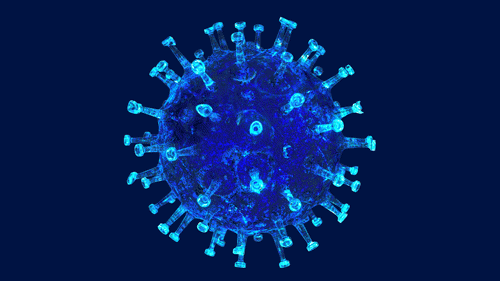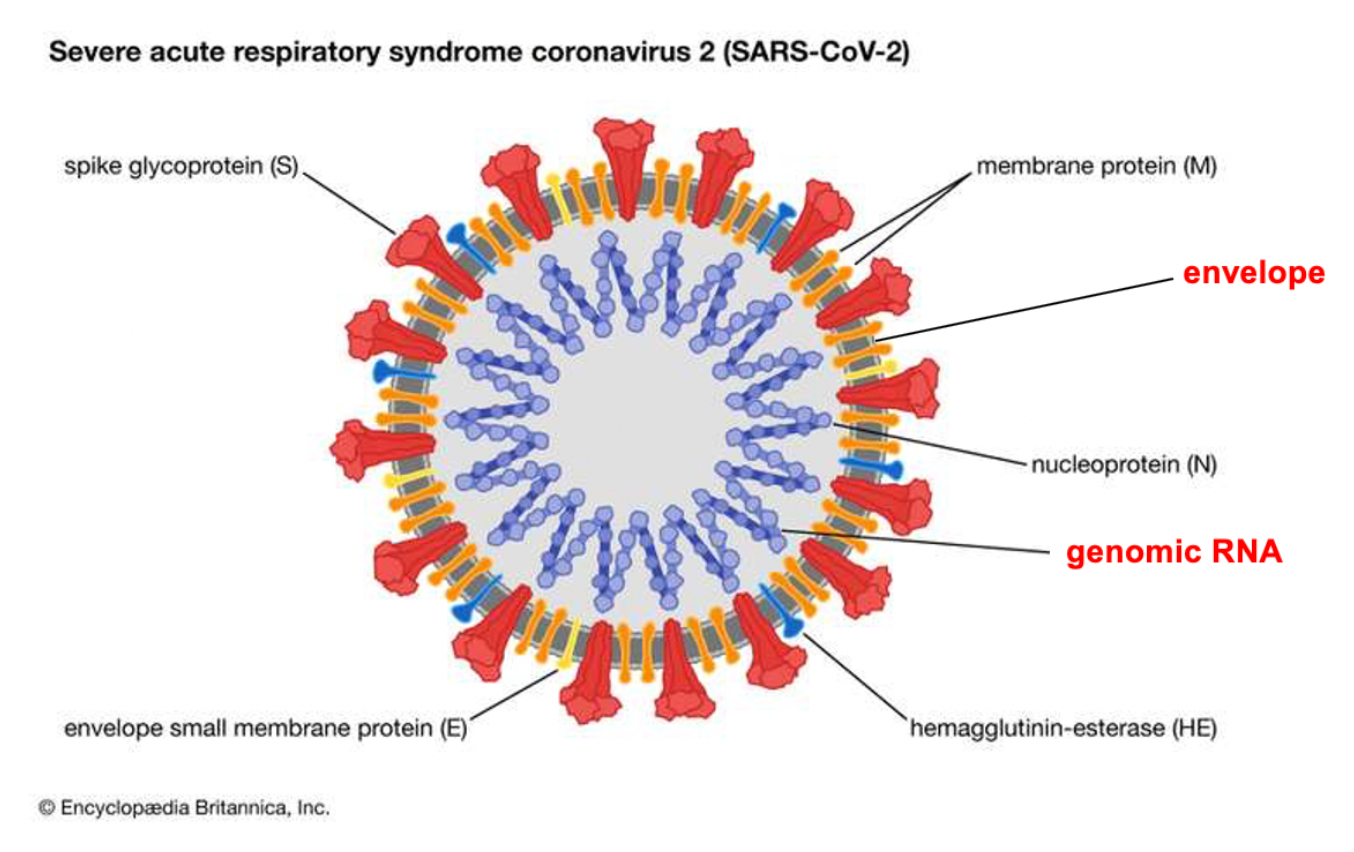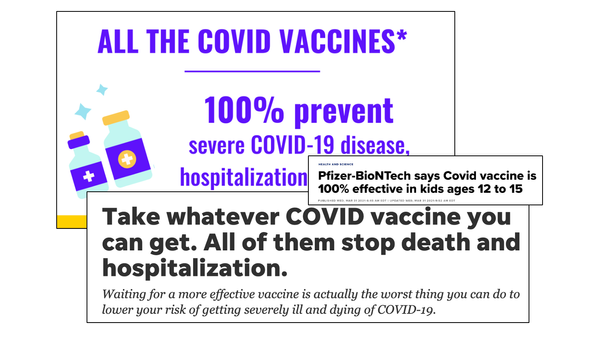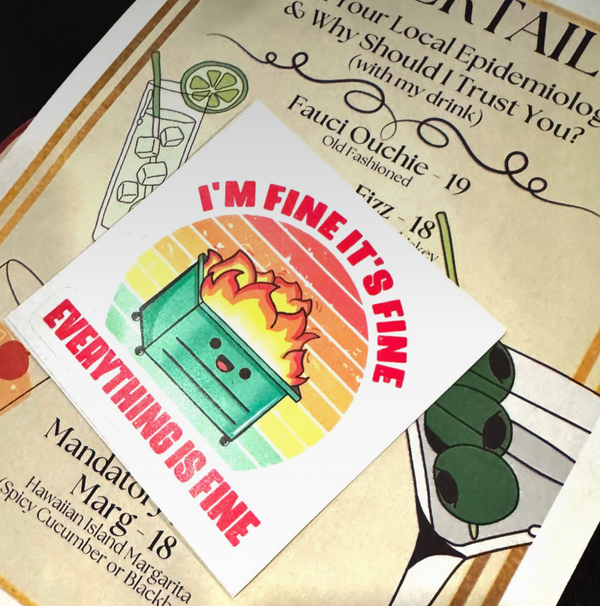Virology 101: Ask a Virologist!

Guest post from virologist Dr. Alex Chang-Graham!
For those of you whose last biology class was decades ago, the differences between bacteria, viruses, and other microbes is probably a bit hazy. I asked my friend Dr. Alex Chang-Graham, who studied viruses for her PhD thesis, to give a refresher on what what viruses are and how they make people sick. Here is her virology 101 course for you!
What is a virus anyway?
Viruses are one of the strangest things in biology – unlike bacteria, mold, and other microbes, they are not exactly “alive.” But that doesn’t stop many of them from making people sick. A virus is a package of genetic material that hijacks the human body to make more copies of itself.
All organisms have genetic information that allows that organism to make more of itself: the genome. In human cells, the genome is made of DNA molecules. Human cells use DNA as the master guidebook to tell the cell how to work and first by transcribing the DNA as RNA, a different kind of genetic material molecule. Then RNA is used as the template to build proteins, which are little machines that do the work in the cell. To use a broad sports metaphor, a team uses a playbook (DNA) to run plays that are given names (RNA) and then the players executes the play (protein) on the court/field (the cell).
DNA is the master guidebook used to make transcripts of RNA, which are then used as the instructions to make proteins, which keep the cells running.
Viruses are special in that, depending on the species of virus, they use DNA or RNA for their genetic material. SARS-CoV-2 is an example of an RNA virus, and the RNA is used to make its own special viral proteins. These viral proteins can help the virus do a variety of tasks including: make more copies of its genome, become the protein capsid or nucleocapsid (the proteins that surrounds the virus’ DNA or RNA), or interfere with host (human) cell’s normal activities. Some viruses, like SARS-CoV-2, also have a fat membrane with viral proteins embedded in it that surrounds the virus capsid. This outer layer of fat is called the envelope. This envelope is essential for SARS-CoV-2 to infect new cells. This is the reason washing your hands with soap or using hand sanitizer works so well against SARS-CoV-2… both soap and hand sanitizer break apart the virus’ fat layer, which inactivates it.

Unlike human cells, viruses cannot replicate or function by themselves. They require entering a host (human) cell first. In other words, a virus needs a “field” (host cell) in order to run any “plays” (make proteins). Once a virus is inside a host cell, it takes over the normal host cell processes. It’s as if Team Virus interferes with the Team Host plays and forces the Team Host to run Team Virus plays instead!
Viruses interfere with the cell’s plays,
just like this tragic ending to Super Bowl 49.
How are viruses different from bacteria?
Viruses require a host cell to replicate while most bacteria can replicate on their own. Viruses are the ultimate intracellular parasite (a parasite that lives inside people’s cells) and have no energy source or way to make copies of itself outside of its host cell. Without host cells, they can do nothing. In contrast, most bacteria can live, get energy, and reproduce without needing the help of human cells.
Despite this limitation, viruses are among the most ubiquitous and successful type of organisms in the world. Different species of virus infect every other kind of life on Earth, including animals, plants, insects, and bacteria. Once a virus invades its host cell, it can be extremely efficient and create many thousands of copies of itself that can then go on to invade new host cells and start new rounds of replication.
How do viruses like SARS-CoV-2 make people sick?
Once a virus invades a human cell, it disrupts all the cell’s normal functions and takes them over to make more copies of itself. However, the human cell can often detect there is something wrong when the virus invades. It sends out danger and mayday signals to other nearby cells, like an emergency flare. These signals include cytokines, which are special kinds of molecules that cause inflammation and activate the immune system. This inflammatory response sounds the alarm and mobilizes immune cells to recognize the viral threat and mount defenses against the virus and the human cells it has already infected. One of the immune responses is antibodies, which neutralize the virus or kill the infected cells to stop viral replication from going any further. (Check out this post to learn more about how our bodies make antibodies and become immune to viruses).
Like emergency flares, many cytokines are signals made by human cells that sound the alarm that there is a problem and recruit the immune system to action.
However, sometimes the body’s immune response can be too enthusiastic and overwhelm the body as a whole. This is called a cytokine storm. Studies so far suggest that SARS-CoV-2 can cause cytokine storms (though this is an area of active research). Fever and cough, the most common symptoms from SARS-CoV-2 infection, can escalate into more serious conditions when the body’s initial immune response fails to contain the virus, and the inflammatory response increases uncontrollably. Acute respiratory distress syndrome occurs when the delicate lung cells cannot exchange oxygen due to damage caused by the virus as well as immune system-driven secretions. Healthy lungs are mostly empty space with cells that are very, very thin to allow oxygen to pass from the air in the lungs into the bloodstream, which then delivers the oxygen all over the body. When the lungs fill up with fluid, the oxygen can’t easily get from the lungs to the bloodstream because there is a bunch of fluid, dead cell debris, and other gunk in the way. This condition is very dangerous and can lead to intubation and high mortality.
Cytokine storms happen when the emergency flares get out of control, and the immune system ends up harming the body instead of helping it.
How do antiviral drugs work?
Antiviral drugs are small molecules that interfere with the actions of viral proteins while leaving human proteins alone. Since viral proteins are often very different from human proteins, they make attractive targets for designing drugs that are targeted specifically to the virus and have limited side effects (side effects happen when drugs interfere with the normal (healthy) actions of human proteins in addition to interfering with their target).
For example, the investigatory drug remdesivir blocks the SARS-CoV-2 viral protein called RNA-dependent RNA-polymerase that makes more copies of the virus’ RNA genome. With reduced replication, there will be fewer copies of the virus to infect new cells, which will help buy the immune system space and time to eliminate the virus.
What is your favorite virus to study?
There are many fascinating viruses that cause a large spectrum of diseases! A group of diverse viruses that have made the news in recent years are broadly called “arboviruses” because they are transmitted to humans by insects. These viruses have adapted to survive and thrive in multiple hosts, very commonly mosquitoes. Arboviruses often cause fever and rash, but are known to also cause muscle and joint pain (Chikungunya virus), fetal abnormalities (Zika virus), meningitis (West Nile virus), or hemorrhagic fever (Dengue virus).
However, a special mention is needed for rotavirus, norovirus, and other enteric viruses, which infect the digestive system. They amazingly survive the harsh environments of the acidic stomach or even when flooded with digestive enzymes. They cause vomiting and diarrhea, which are both our bodies’ defense mechanism to get rid of the virus AND how the virus can spread to new hosts. Very clever!
Dr. Chang-Graham completed her Ph.D. studying how rotavirus causes life-threatening diarrhea particularly in children. While she loves studying infectious diseases in general, she is especially interested in viruses and how they take over host cells to cause physical disease. She is currently finishing her medical degree.




